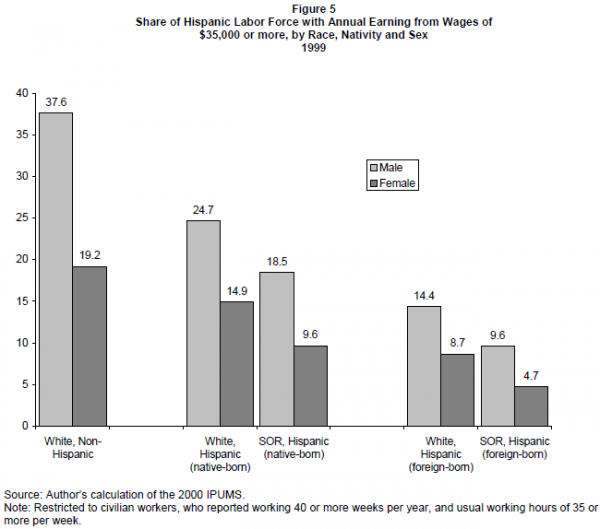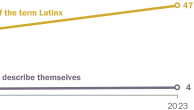For both the native and the foreign born, feelings of inclusion and civic engagement are related to socioeconomic status, which in turn can be related to race. For example, one Cuban American focus group respondent stated it this way,
“When it comes to money, social classes think of themselves as higher or lower. The white always has the highest social prestige and the darker skin always have the lower social prestige, because you have some very dark skinned people who earn a lot of money, and you tell them you’re dark skinned…oh, no, I’m white. One thing has nothing to do with the other.”
The idea expressed by this respondent is consistent with many indicators of socioeconomic status consistently showing that SOR Hispanics have a somewhat weaker economic mooring than white Hispanics here in the United States. Educational attainment is fundamental to these differences. Whereas very few (14.6 percent) of non-Hispanic whites have less than a high school education, a larger share of the Hispanic foreign-born population does not have a complete secondary school education (Table 4). The share without a high school education is higher for SOR Hispanics (65.5 percent) than it is for white Hispanics (55.3 percent). Among the native-born, also a greater share of native-born SOR Hispanics (35 percent) lacks a high school diploma when compared with white Hispanics (29.8 percent), although the difference is narrower.
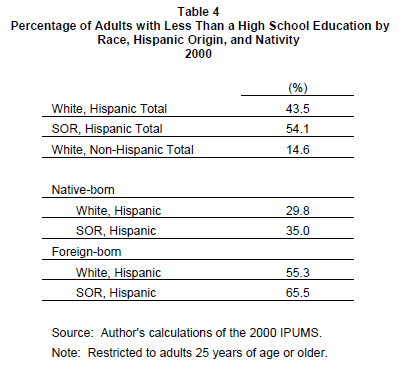
Educational differences between national origin groups do not drive this pattern of lower educational attainment for SOR Hispanics as compared with white Hispanics. Indeed, the pattern prevails for nativeborn household heads of all national origins (Table 5).
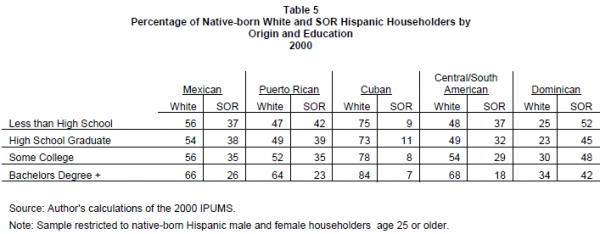
Generally, unemployment rates are higher for all persons lacking a high school diploma. Thus, it is not surprising that both foreign- and native-born SOR Hispanics have higher unemployment rates than white Hispanics (Figure 2). For example, native-born SOR Hispanic men have an unemployment rate of 9.9 percent while the figure for native-born white Hispanic is 8.0.
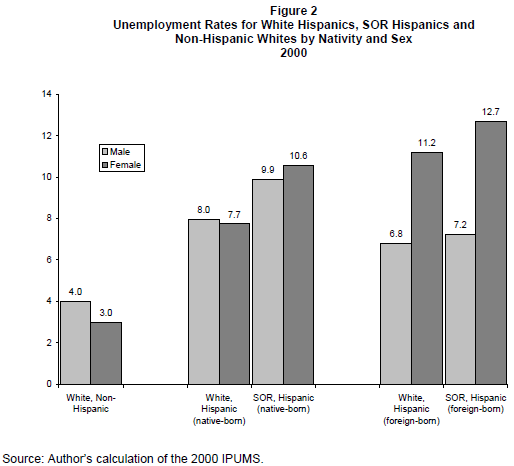
The poverty rate for Hispanics as a whole was 22.6 percent in 1999, more than double the rate (8.1 percent) for non-Hispanic Whites. When Hispanics are disaggregated into race groups, those Hispanics who are white, have lower poverty rates than those who identify as SOR and the difference is greater among the native-born than among immigrants (Figure 3).
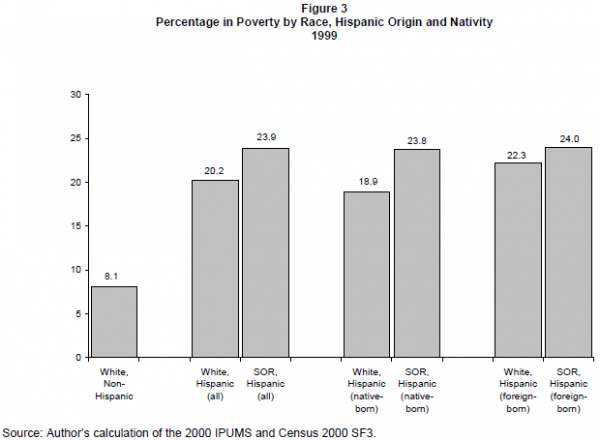
A consistent pattern emerges across Hispanic national origin groups: Hispanic whites have a lower poverty rate than SOR Hispanics although it is still greater than for non-Hispanic whites. The difference in poverty rates for Hispanic whites and SOR Hispanics is particularly striking for Puerto Ricans and Cubans (Table 6).
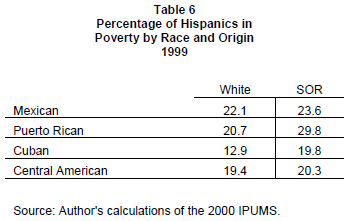
While children in the United States typically have higher poverty rates than adults, excluding children and examining poverty among working age adults still reveals race differences between white and SOR Hispanics (Figure 4). For example, 18 percent of native-born SOR Hispanic adults live in poverty, while fewer, (14 percent) of white Hispanics live in poverty. The importance of limiting the sample to adults is illustrated in a subsequent section on the age profile of white versus SOR Hispanics.
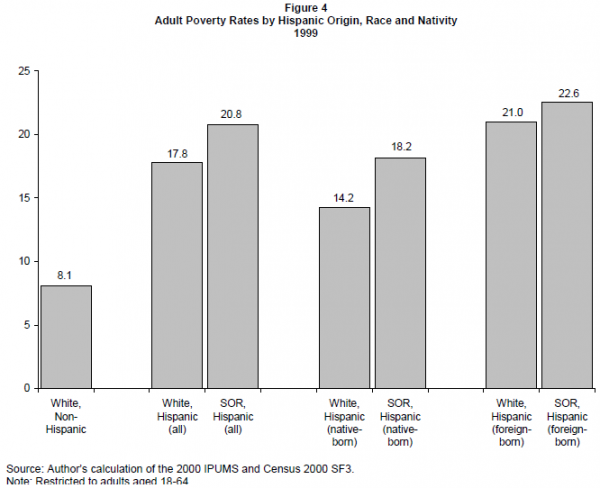
Earnings data for Hispanics are also consistent with the above findings on education, unemployment and poverty. For example, Figure 5 shows that for both men and women the share of SOR Hispanics earning at least $35,000 per year is lower than for white Hispanics. Since much of the wage gap between Hispanics and non-Hispanic whites is driven by educational differences, it is likely that the lower educational attainment of SOR Hispanics as compared with white Hispanics drives a large share of these earnings differences (Smith, 2001). Focus group respondents expressed a link between these objective socioeconomic differences by race and a sense of inclusion. A third generation respondent from Texas expressed the following:
“If we are saying mainstream is white American culture, how much money do they have? Hispanics with more money maybe fit into mainstream culture better than people that have just come from Mexico.”
